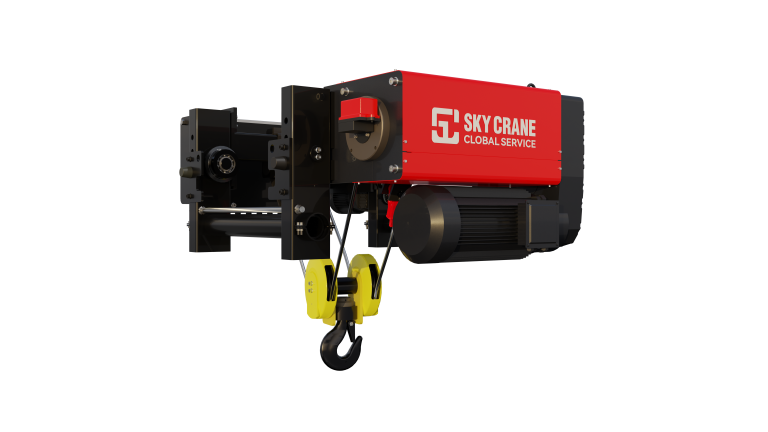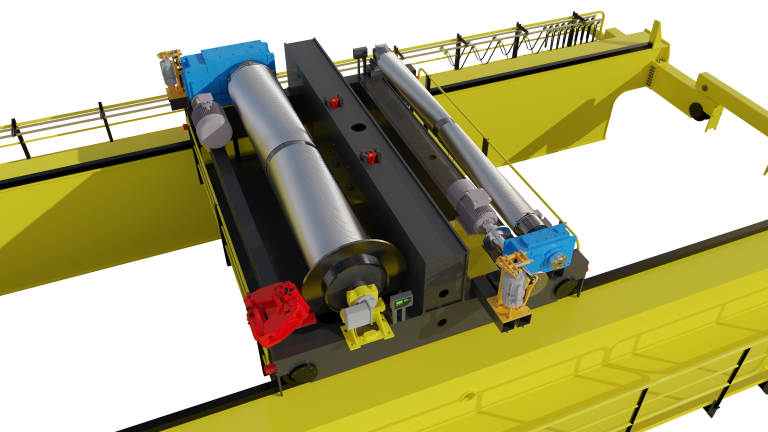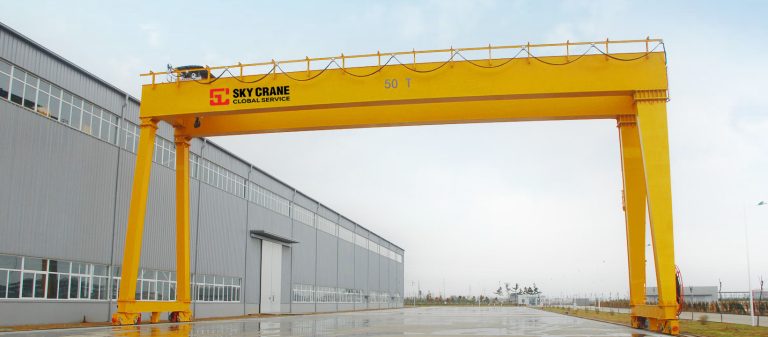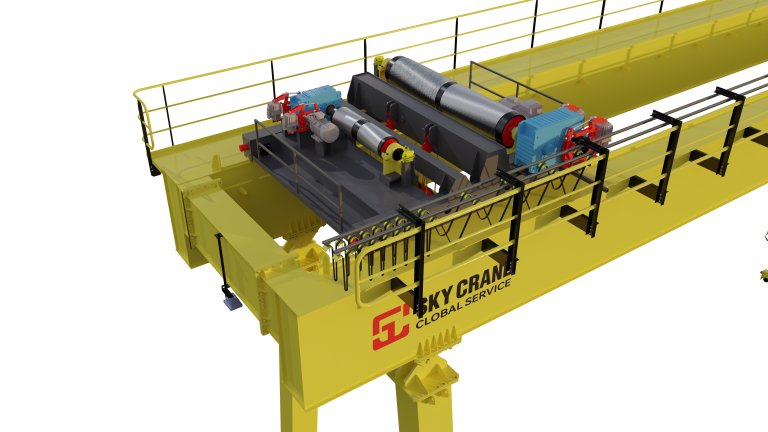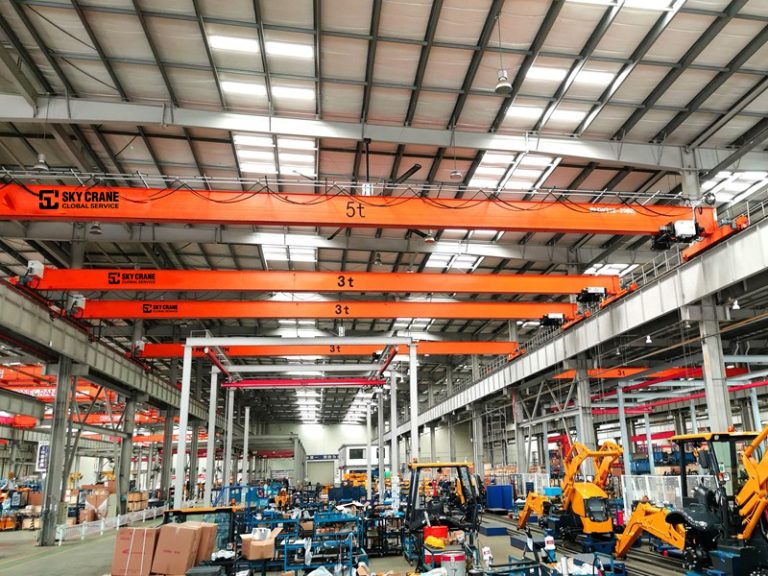Table of Contents
Advantages of General Purpose Bridge Cranes in Chinese Manufacturing
General purpose bridge cranes have become an integral part of the manufacturing landscape in China, offering a multitude of advantages that enhance operational efficiency and productivity. These cranes, characterized by their versatility and robust design, are particularly well-suited for a variety of industrial applications, ranging from assembly lines to heavy lifting tasks. One of the primary benefits of general purpose bridge cranes is their ability to optimize space utilization within manufacturing facilities. By operating overhead, these cranes free up valuable floor space, allowing for more efficient layout designs and improved workflow. This spatial efficiency is particularly crucial in densely populated manufacturing environments, where maximizing every square meter can lead to significant cost savings.
Moreover, the design of general purpose bridge cranes allows for seamless movement across large areas, which is essential in environments where materials need to be transported over considerable distances. This capability not only reduces the time required for material handling but also minimizes the risk of workplace accidents, as the cranes can operate independently of pedestrian traffic. Consequently, the implementation of these cranes contributes to a safer working environment, which is a critical consideration for manufacturers aiming to maintain high safety standards.
| Serial Number | Products |
| 1 | European electric single beam |
| 2 | MH rack crane |
| 3 | European-style crane |
| 4 | Harbour crane |
In addition to enhancing safety and space efficiency, general purpose bridge cranes are known for their durability and reliability. Constructed from high-quality materials, these cranes are designed to withstand the rigors of daily use in demanding industrial settings. This durability translates into lower maintenance costs and reduced downtime, allowing manufacturers to maintain consistent production schedules. Furthermore, the advanced engineering techniques employed in the design of these cranes ensure that they can handle a wide range of loads, making them suitable for various applications, from light assembly tasks to heavy machinery lifting.
Another significant advantage of general purpose bridge cranes is their adaptability to different manufacturing processes. As industries evolve and production requirements change, the flexibility of these cranes allows manufacturers to easily modify their operations without the need for extensive equipment overhauls. This adaptability is particularly beneficial in the fast-paced Chinese manufacturing sector, where companies must remain agile to respond to market demands and technological advancements. By investing in general purpose bridge cranes, manufacturers can future-proof their operations, ensuring that they remain competitive in an ever-changing landscape.
Furthermore, the integration of advanced technology into general purpose bridge cranes has revolutionized their operation. Many modern cranes are equipped with sophisticated control systems that enhance precision and ease of use. Operators can now manage lifting and movement with greater accuracy, reducing the likelihood of errors and improving overall productivity. Additionally, the incorporation of automation features allows for the possibility of remote operation, further streamlining processes and reducing labor costs.
In conclusion, the advantages of general purpose bridge cranes in Chinese manufacturing are manifold. From optimizing space and enhancing safety to providing durability and adaptability, these cranes play a crucial role in improving operational efficiency. As manufacturers continue to seek ways to enhance productivity and reduce costs, the importance of investing in reliable and versatile equipment like general purpose bridge cranes cannot be overstated. With their ability to meet the diverse needs of modern manufacturing, these cranes are poised to remain a vital component of the industry for years to come.
Top Features of General Purpose Bridge Cranes from China’s Best Factories
General purpose bridge cranes manufactured in China have gained significant recognition in the global market due to their advanced engineering, robust design, and versatile applications. These cranes are essential in various industries, including manufacturing, construction, and logistics, where they facilitate the efficient movement of heavy materials. One of the standout features of these cranes is their exceptional load capacity, which can range from a few tons to several hundred tons, depending on the specific model and configuration. This adaptability makes them suitable for a wide array of tasks, from lifting small components to handling large machinery.
Moreover, the design of general purpose bridge cranes emphasizes durability and reliability. Chinese manufacturers utilize high-quality materials and advanced manufacturing techniques to ensure that their cranes can withstand the rigors of daily use in demanding environments. This focus on quality not only enhances the lifespan of the equipment but also minimizes maintenance costs, providing a cost-effective solution for businesses. Additionally, many of these cranes are equipped with advanced safety features, such as overload protection systems and emergency stop functions, which are crucial for preventing accidents and ensuring the safety of operators and personnel in the vicinity.
Another notable feature of general purpose bridge cranes from China’s best factories is their ease of operation. Many models come with user-friendly controls that allow operators to maneuver the crane with precision and ease. This is particularly important in busy work environments where efficiency is paramount. Furthermore, some manufacturers offer customizable control systems, including remote control options, which enhance operational flexibility and allow for greater control over lifting operations. This adaptability is further complemented by the cranes’ ability to operate in various configurations, such as single girder or double girder designs, catering to the specific needs of different industries.
In addition to their operational efficiency, general purpose bridge cranes are designed with energy efficiency in mind. Many modern models incorporate advanced technologies that reduce power consumption, thereby lowering operational costs and minimizing environmental impact. This commitment to sustainability is increasingly important in today\\u2019s industrial landscape, where companies are seeking to reduce their carbon footprint while maintaining productivity. As a result, businesses that invest in these cranes not only benefit from their performance but also contribute to broader environmental goals.
Furthermore, the availability of comprehensive after-sales support and service from Chinese manufacturers enhances the overall value of these cranes. Many factories provide extensive warranties, training programs for operators, and readily available spare parts, ensuring that customers receive ongoing support throughout the lifespan of their equipment. This commitment to customer service fosters long-term relationships between manufacturers and clients, further solidifying China’s position as a leader in the crane manufacturing industry.

In conclusion, general purpose bridge cranes from China’s best factories are characterized by their impressive load capacities, durable construction, user-friendly operation, energy efficiency, and robust after-sales support. These features not only enhance the cranes’ performance but also provide significant advantages to businesses across various sectors. As industries continue to evolve and demand more efficient lifting solutions, the innovations and quality offered by Chinese manufacturers will undoubtedly play a pivotal role in shaping the future of material handling equipment. By investing in these advanced cranes, companies can improve their operational efficiency, ensure safety, and contribute to sustainable practices in their respective fields.
Comparing Quality and Cost: General Purpose Bridge Cranes in China vs. Other Countries
When considering the procurement of general purpose bridge cranes, a critical evaluation of quality and cost is essential, particularly when comparing manufacturers in China with those in other countries. The global market for industrial equipment has seen a significant shift, with China emerging as a dominant player in the production of bridge cranes. This shift can be attributed to several factors, including advancements in manufacturing technology, economies of scale, and a robust supply chain network. As a result, many businesses are increasingly looking to Chinese manufacturers for their crane needs.
One of the primary advantages of sourcing bridge cranes from China is the cost-effectiveness associated with their production. Chinese factories benefit from lower labor costs and a well-established infrastructure that allows for mass production. This economic advantage often translates into lower prices for consumers, making it an attractive option for companies looking to optimize their capital expenditures. However, while cost is a significant factor, it is crucial to consider the quality of the cranes being produced.
In recent years, Chinese manufacturers have made substantial investments in technology and quality control processes. Many factories now adhere to international standards, such as ISO certifications, which ensure that their products meet stringent quality requirements. This commitment to quality has led to the production of reliable and durable bridge cranes that can compete with those manufactured in more developed countries. Furthermore, many Chinese companies have established partnerships with international firms, allowing them to incorporate best practices and advanced technologies into their manufacturing processes.
On the other hand, manufacturers in countries such as Germany, the United States, and Japan have long been recognized for their engineering excellence and high-quality standards. These countries often produce bridge cranes that are renowned for their reliability and performance. However, this level of quality typically comes at a higher price point. For businesses that prioritize quality over cost, investing in cranes from these countries may be justified, especially in industries where downtime can lead to significant financial losses.
Despite the higher costs associated with cranes from developed nations, it is essential to consider the total cost of ownership. While the initial purchase price may be higher, factors such as maintenance, operational efficiency, and longevity can significantly impact the overall investment. In some cases, a more expensive crane may offer better performance and lower maintenance costs over its lifespan, ultimately resulting in a more favorable return on investment.
Moreover, the choice between Chinese and non-Chinese manufacturers may also depend on specific industry requirements and applications. Certain sectors may demand specialized features or certifications that are more readily available from established manufacturers in developed countries. Conversely, for general applications where cost efficiency is paramount, Chinese manufacturers may provide a compelling option without compromising on quality.
In conclusion, the decision to purchase general purpose bridge cranes from Chinese manufacturers versus those in other countries involves a careful consideration of both quality and cost. While Chinese factories offer competitive pricing and have made significant strides in quality assurance, established manufacturers in developed nations continue to provide high-quality products that may justify their higher costs. Ultimately, businesses must assess their specific needs, budget constraints, and long-term operational goals to make an informed decision that aligns with their strategic objectives. As the market continues to evolve, staying informed about the latest developments in crane manufacturing will be essential for making the best choice.

